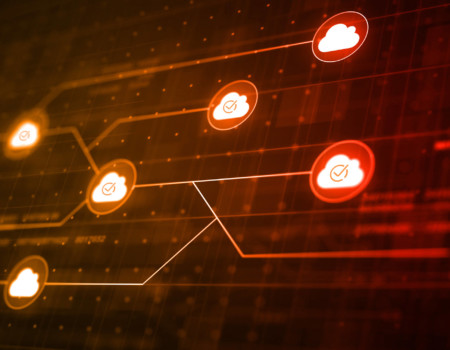System migration to the Cloud
The ability to move to a cloud-based version of SAP S/4HANA is a long-term investment in savings. These are primarily related to the purchase and configuration of infrastructure. When choosing the on-premise option, it is up to the client to purchase the appropriate hardware, which is the heart of the entire system. This is a significant cost that must be considered in the context of the size of the company, its further development, or any reductions in the use of resources. Modern data centers, on the other hand, can often afford better equipment that ensures adequate speed of the entire system. In the case of the public cloud, its scalability allows you to instantly adjust the amount of infrastructure needed to support your business. If you need to expand, just change your plan. And if you need to scale back, you only pay for the space you use in the cloud. No need to worry about unused infrastructure. The lower maintenance costs of a public or private cloud are also reflected in electricity bills, which are a major expense for any business today.
Preparing to implement SAP ERP in the cloud
Life experience from early school years proves that proper preparation can help avoid stress and achieve good results. Whether it is an exam, a sports competition, a hiking trip, a shopping list or… the implementation of a new tool in an organization. You can count on luck, but with such a serious investment that affects the future of a company, it is not worth relying on fate.
Here are some steps to better prepare for the changes ahead, understand why they are necessary, and carefully plan the scope and cost of implementing SAP solutions to avoid surprises down the road:
- Support from the top – approval of the management board and appointment of a person responsible for contact with decision-makers will ensure not only adequate funding for the project, but also its smooth implementation. Appropriate communication or authorization is critical for quick action. Board approval also allows you to incorporate or reconsider technology changes in the context of the overall organization’s strategy. The goals and expected benefits should be clearly defined.
- Infrastructure – if you opt for the on-premise version, it is worthwhile to assess the infrastructure requirements in advance and design it to not only meet, but also slightly exceed the needs of the organization as it continues to grow. It is also worth making sure that you have the basic tools to work on the project, such as a place for consultants and a secure external connection.
- Single-mindedness – it is very common that decisions on software upgrades are made at the top and do not take into account the real needs of their users. Before starting a project, it is a good idea to conduct a consultation to estimate the scope of the implementation and thus – its cost. This will help you avoid surprises later in the project. It is also worth selecting key users to test the new tools and become internal ambassadors for change. Involving them further in the process will be easier if they learn and accept the new role.
- Consistency of processes with company policy – in large organizations with complex structures, making decisions or introducing changes is not easy. Before implementing a new system and possibly redesigning some processes, it is worth making sure that everything is still in line with company policy. Otherwise, the investment may be significantly delayed or even fail!
Step-by-step implementation process according to SAP Activate principles
Solutions are implemented according to the instructions provided by SAP. This ensures that the project is properly planned and all elements are considered. The individual phases look like this:
I – Discover
During the discovery phase, the Client and the implementation partner get to know each other. The ordering party discovers the capabilities of the SAP system, and the contractor identifies the company’s internal processes. Together, we make sure that the initial assumptions are aligned with the organization’s business needs and translate them into an action plan. We identify potential challenges, create a transformation map, and then integrate this journey into the organization’s overall strategy.
II – Prepare
All formalities must be completed to the very last detail. Finally, the scope of the project is defined, the project environment is prepared, and communication channels, project tools, timelines, and standards are established. Representatives are selected to form the Project Team.
This is a good opportunity to ask questions and clear up any doubts, which will improve future collaboration.
III – Explore
Based on best practices, SAP solutions are adapted to the needs of the company. This is where we determine exactly which solution will meet the Client’s needs. Possible deviations from the standard are defined and gaps are filled. It is also determined what data needs to be transferred to the new environment or how current processes can be improved using the capabilities of the ERP system from SAP.
IV – Realize
If both parties give due attention to the previous stages, implementation usually proceeds without major obstacles. The use of agile methodology and proper communication will ensure the avoidance of misinterpretation or possible omission of the design phase. If necessary, it is also possible to adjust the direction of the project.
Key users are also trained and will share their knowledge with the rest of the organization.
Tests are performed to ensure that the final quality is maintained.
V – Deploy
Successful testing is followed by a summary, acceptance, and preparation for launching the system. End users are trained, data is migrated, and consultants ensure that the system is patched and set up as needed.
The phase concludes with the startup of the system. For this to happen, it is necessary to be sure that not only the software, but the entire organization is ready for the change.
VI – Run
Further operation and maintenance of the system is entirely at the Client’s discretion. We recommend going through the Hypercare process, which is ongoing support from the Implementation Team right after the system goes live. If any complications or doubts arise – they will be able to respond quickly as they are most familiar with the implemented system.
At Hicron, we place great emphasis on continuous cooperation with our clients, and our Maintenance Teams are highly trusted. Together, we plan development opportunities and optimize the system to ensure its smooth operation.
SAP S/4HANA implementation with Hicron
An undertaking as large as implementing or migrating a system to S/4HANA requires good cooperation and mutual trust between all parties involved in the project. Business experience also plays a big role, which the implementation partner can leverage when transferring processes to a new environment. At Hicron, we do not just model them. As VisiON Architect, SolutiON Maker, we strive to improve what we find not only from the technological side, but also from the business side, making digital transformation a true industrial revolution of the future.
We have implemented our flagship projects in large multinational organizations, complex structures of state-owned enterprises, but also in smaller companies entering a new level. One of them was the migration and rollout of S/4HANA at Sharp, where we worked under great time pressure, but with the support of the Client’s excellent team. Everything was carried out, among others, after a gradual implementation of SAP HANA.
Read more about the importance of involvement on both sides: https://hicron.com/pl/klienci/sharp/
It is worth noting that for current SAP ECC users, migration to S/4HANA will be inevitable until 2027, when support for the legacy SAP ERP system will be phased out.
And if you want to learn more about a transformation tailored to your company’s needs – our experts are here to help! Contact us and discover SAP products!







